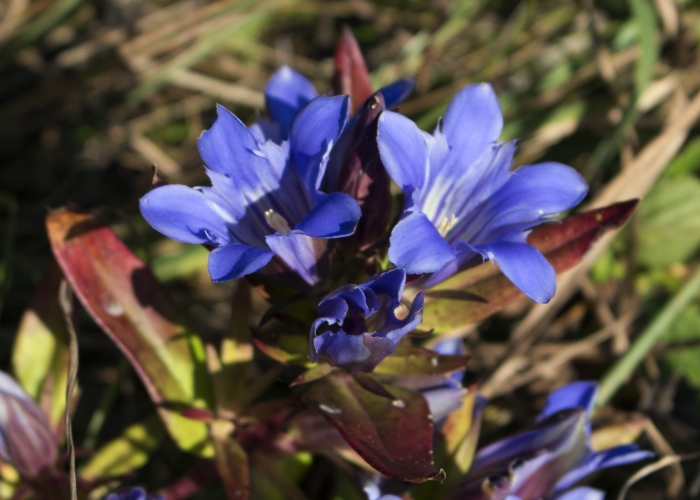Downy Gentian
(Gentiana puberulenta)
Downy Gentian (Gentiana puberulenta)
/
/

aarongunnar
CC BY 4.0
Image By:
aarongunnar
Recorded By:
Copyright:
CC BY 4.0
Copyright Notice:
Photo by: aarongunnar | License Type: CC BY 4.0 | License URL: http://creativecommons.org/licenses/by/4.0/ | Rights Holder: aarongunnar | Publisher: iNaturalist | Date Created: 2017-09-19T11:23:10-07:00 |

























Estimated Native Range
Summary
Gentiana puberulenta, commonly known as Downy Gentian, is a perennial herb native to the central United States, particularly thriving in dry upland prairies, glades, and rocky open slopes. It typically grows to a height of ¾-1½ feet tall. The plant features bright blue to deep blue-violet, bell-shaped flowers measuring 1½ to 2¼ inches across, which bloom in clusters of 1-8 at the apex of the stems from late summer to fall. The lanceolate, glossy leaves are arranged oppositely along the stem, contributing to the plant’s lush appearance.
Downy Gentian is valued for its striking blue flowers that provide a splash of late-season color in gardens. It is often used in wildflower gardens, native plant landscapes, and restoration projects due to its adaptability and low maintenance needs. It prefers full sun to partial shade and requires well-drained soil, tolerating dry conditions once established. While it is not commonly affected by serious pests or diseases, it can be challenging to grow from seed and may require stratification to germinate. Downy Gentian is not known for aggressive roots or invasiveness, making it a safe choice for various garden settings.CC BY-SA 4.0
Downy Gentian is valued for its striking blue flowers that provide a splash of late-season color in gardens. It is often used in wildflower gardens, native plant landscapes, and restoration projects due to its adaptability and low maintenance needs. It prefers full sun to partial shade and requires well-drained soil, tolerating dry conditions once established. While it is not commonly affected by serious pests or diseases, it can be challenging to grow from seed and may require stratification to germinate. Downy Gentian is not known for aggressive roots or invasiveness, making it a safe choice for various garden settings.CC BY-SA 4.0
Plant Description
- Plant Type: Herb
- Height: 1-1.5 feet
- Width: 0.5-1 feet
- Growth Rate: Slow, Moderate
- Flower Color: Blue, Purple
- Flowering Season: Summer, Fall
- Leaf Retention: Deciduous
Growth Requirements
- Sun: Full Sun, Part Shade
- Water: Medium
- Drainage: Medium
Common Uses
Border Plant, Butterfly Garden, Deer Resistant, Low Maintenance
Natural Habitat
native to the central United States, particularly thriving in dry upland prairies, glades, and rocky open slopes
Other Names
Common Names: Prairie Gentian
Scientific Names: , Gentiana puberulenta, Gentiana linearis,
GBIF Accepted Name: